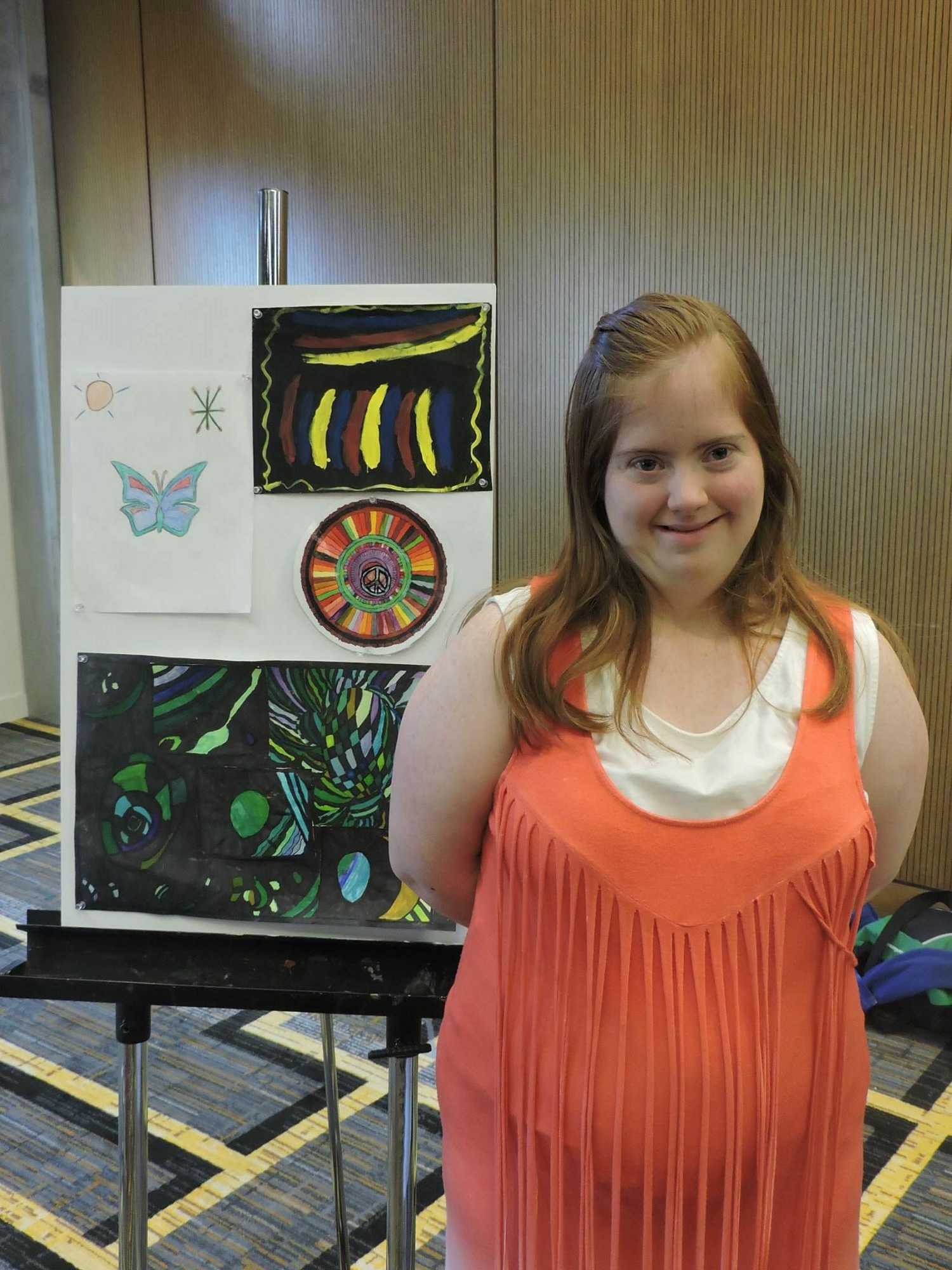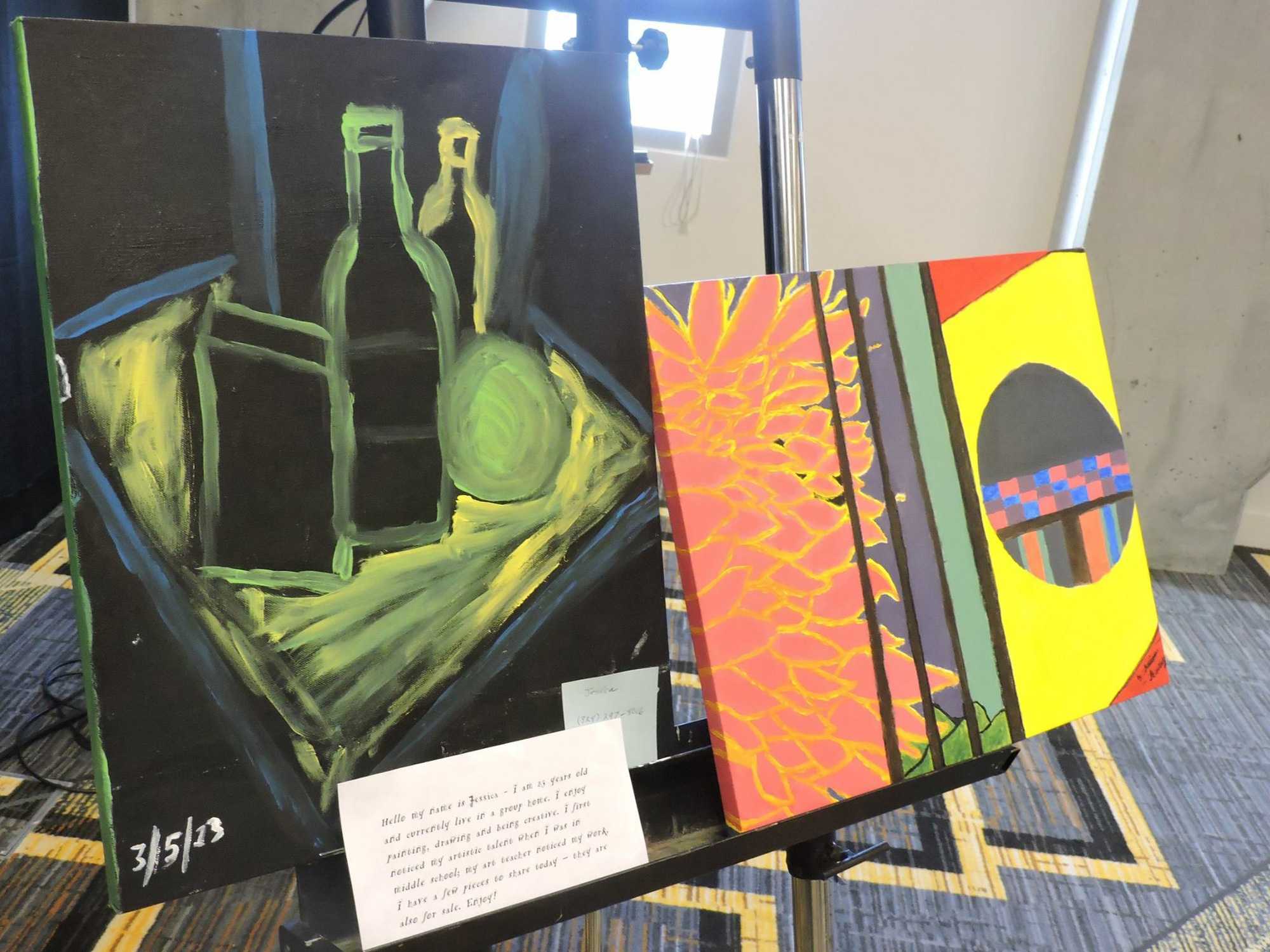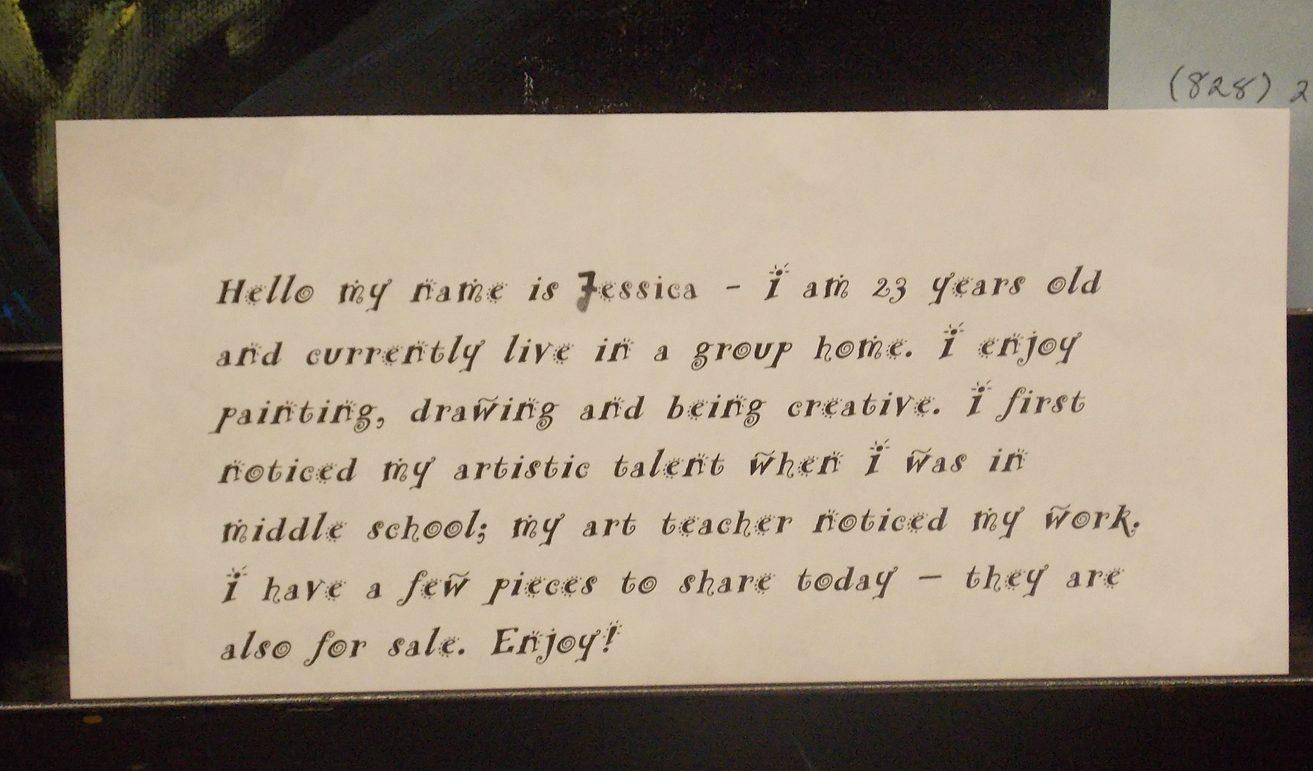An intimate gathering of about 20 people came to the Parkway Ballroom to view and discuss the wide array of multimedia pieces created by artists with developmental disabilities for the Autism Society of North Carolina’s Artist Showcase on April 16. There were about 10 different exhibits showcasing everything from drawings to wirework.
This was the first major event that Appalachian State’s chapter of the Autism Society of North Carolina, or ASNC, put on. The club was started last semester by sophomore psychology major Hailey Pister and junior psychology major Anna Reeves.
The two worked together at Camp Royall, a camp sponsored by the ASNC, this past summer. After working at the camp, the two were approached by their camp director Sara Gage about starting a chapter of ASNC in Boone.
Pister and Reeves said that ASNC’s mission is to serve people with autism in the Boone area with whatever they may need. The club is hoping in the future to raise money to send people to camp and train others to work with people who have autism.
“We are really focused on serving the Boone community of people with autism,” Pister said. “We hope to bring some autism acceptance here in any way we can.”
Most of the exhibits were unmanned. They each had the artist’s work on display using either an easel or a table, and some had information about the artist or the program they were in where they created the art.
There were four artists, however, that engaged with the gallery’s patrons about their art. One of them was Moriah McKinney, an ASU scholar with diverse abilities graduate who still volunteers on campus.
She had four pieces laid out on an easel that she had drawn and painted over the years. Most of her pieces were abstract and colorful and showcased a wide variety of shapes and patterns. She said that her favorite piece was a butterfly that she traced from her computer screen and colored in.
Local artist Melody Haven’s table was covered with red velvet cloth. She had her intricately fashioned wire jewelry spread out along with a tray of business cards. Some pieces were in a large, wooden box with a glass lid, others were laid directly on the velvet cloth and one of her necklaces was on a mannequin.
Haven has been doing wire work since her freshman year of high school. She said that someone taught her how to work with wire, and that she is still learning today. Haven said that she is not really sure how she gets the inspiration for her work, but that she just visualizes some of it and then begins crafting it. Each piece of jewelry takes her several days to a week to craft.
Stephen Graham was also present at the art show, eagerly discussing his work with patrons. He is a senior at Watauga High School and was showing a collection of drawings that one of his teachers helped him bind into a book. Each page of the book had a character he drew, most of them robots, with the names written underneath.
Graham said he was inspired by movies, television shows and things he saw on the internet. Each character was drawn the way he interpreted them to be, instead of how they were originally created to look.
Graham’s favorite picture that he drew was one called “Benjamin.” He said that Benjamin was his favorite because it includes several of his different personalities. Graham said that he is a risk taker, a bit reckless, and helpful, and all of these characteristics are seen in the robot, Benjamin.
The goal of the show was to demonstrate that everyone is different, but also that they all share common interests, Pister said.
“We all still have talents, dreams and hopes,” Pister said. “I hope we can all just gather around our community and be more accepting of everyone who is different than us.”
Reeves hopes that the show was a way for people in the community to be more comfortable talking to and about people with autism and other diverse abilities. Judging from the reactions of the crowd, that goal was achieved.
Alumna Jasmine Henderson graduated in December of 2015 with a degree in psychology. She said that she thought that the art was very beautiful and inspiring. Junior communications and public relations major Dustin Moss agreed that the art was inspiring. He also said that all of the artists at the showcase were better than him. It made both of them more aware of what people with diverse abilities can do.
Junior psychology major Sydney Messer is the treasurer of ASNC and is in charge of the fundraising. She hopes that the art show promoted awareness about autism spectrum disorder and other developmental disabilities.
“I hope that it promotes a little bit of awareness and helps to remove the stigmatization that there is surrounding people with autism spectrum disorders,” Messer said. “They’re not pitying themselves for how they are and we shouldn’t either because they have their own special traits.”
ASNC hopes to put on more events like this in the future and continue to assist and spread awareness about people with autism. For more information about the club and future events, like their Facebook page, ASNC Appalachian State.
Story by: Celia Calhoun, A&E Reporter



